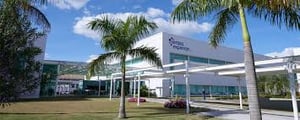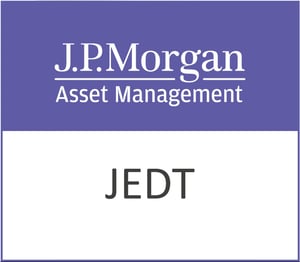Royal Bank of Scotland Group PLC (LON:RBS) today announced 2018 performance summary
● Q4 2018 operating profit before tax of £572 million and an attributable profit of £286 million.
Continued track record of delivery
Income resilient in a competitive market:
● Income increased by £269 million, or 2.0%, compared with 2017. Excluding notable items, NatWest Markets and Central items, income was stable.
● 2018 net interest margin of 1.98% decreased by 15 basis points compared with 2017. Q4 2018 net interest margin of 1.95%, or 1.97% excluding one-off items, was 2 basis points higher than Q3 2018.
Lower costs through continued transformation and increased digitisation:
● Compared with 2017, other expenses decreased by £278 million, or 3.6%, excluding one-off VAT releases in 2017, and FTEs reduced by 5.8%.
● We continue to transition from physical to digital services. 6.4 million customers now regularly use our mobile app, 16% higher than 2017. In UK PBB, total digital sales increased by 19%, representing 45% of all sales. In Commercial Banking, we successfully launched the Bankline mobile app in the Apple app store and our customers can now apply digitally for loans of up to £750,000, the largest value offered by a UK commercial bank, with approximately 50% of loans given a decision in principle in under 24 hours.
Stronger capital position:
● CET1 ratio of 16.2% increased by 30 basis points in 2018 and included: the impact of a £2 billion pre-tax pension contribution; the settlement with the Department of Justice; and full year ordinary and special dividends of £1.6 billion. Excluding these items, the CET1 ratio increased by 240 basis points driven by the profit and reduced RWAs.
● Active capital management reduced RWAs by £12.2 billion in 2018.
● RBS achieved a clear pass in the 2018 Bank of England stress test.
Outlook(1)
RBS, like all companies, continues to deal with a range of significant risks and uncertainties in the external economic, political and regulatory environment. Our central economic forecast, which supports our corporate plan, is in line with consensus as at the end of December 2018 and shows average UK GDP growth of around 1.0-2.0% from 2019 to 2023 and continued low interest rates. Given the current uncertainties we will continue to actively monitor and react to market conditions.
2019 Outlook
As part of our continued cost savings plans, we expect to incur aggregate strategic costs of around £2.5 billion across 2018 and 2019, with £1.0 billion of this having been incurred during 2018. We plan to reduce operating expenses, excluding strategic costs and conduct and litigation costs, by £300 million in 2019 compared with 2018, excluding one-off items.
2018 saw a continuation of the period of benign economic conditions with low defaults and strong cash recoveries. However, the potential impact on the real economy of ongoing political uncertainties and geopolitical tensions could affect our credit loss outcome. As a result, impairments are expected to increase in 2019 but remain below our through-the-cycle loss rate assumption of 30-40 basis points. The threat from single name and sector driven events remains.
We expect to end 2019 with risk weighted assets (RWAs) of around £185 – 190 billion as the RWAs associated with Alawwal Bank are expected to reduce by around £5 billion, subject to regulatory approvals relating to the merger and our shareholding.
RBS Group (RBSG) capital and funding plans focus on issuing £3-5 billion of MREL-compliant instruments and around £1 billion of Tier 2 instruments. We do not plan to issue AT1 in 2019. As in prior years, we will continue to target other funding sources to diversify our funding structure, including senior secured issuance of £2-3 billion from NatWest Bank. NatWest Markets Plc, as a standalone bank, plans to issue £3-5 billion of term senior unsecured instruments.
Medium term outlook
While we remain comfortable with our 2020 target of a return on tangible equity of more than 12%, we recognise our 2020 target of a cost:income ratio of less than 50% is increasingly challenging for the business to achieve with the risk being to the downside. This reflects the ongoing economic and political uncertainty and the additional ongoing costs associated with ring-fencing and Brexit.
Our previous guidance on RWAs beyond 2020 was an estimated 10% increase in 2021 relating to Basel 3 amendments, in addition to RWA inflation as a result of IFRS 16, which requires lease obligations to be brought on balance sheet, of £1.3 billion in 2019 and Bank of England mortgage floors of £10.5 billion in 2020. We now expect the overall impact of Basel 3 amendments to be in the range of 5-10% and phased across 2021 to 2023, with the details still subject to significant regulatory uncertainty.
RBS Group capital distributions
We propose a 3.5 pence final ordinary dividend and a 7.5 pence special dividend for the 2018 financial year, while maintaining a CET1 ratio of 16.2% as at 31 December 2018.
Pro-forma for the introduction of IFRS16 – Leases, the CET1 ratio was 16.0%, with the c.20 basis points reduction reflecting a £1.3 billion increase in RWAs and £0.3 billion charge against reserves.
We expect to maintain ordinary dividends of around 40% of attributable profit. We have updated our medium term guidance of CET1 to be approximately 14% at the end of 2021. We have shareholder and regulatory approval to carry out directed buybacks of the UK government stake in RBS, but recognise that any exercise of this authority would be dependant upon HMT’s intentions and is limited to 4.99% of issued share capital in any 12 month period. As a reminder, we have also committed to make further pre tax contributions to the pension scheme of up to £1.5 billion in aggregate from 1 January 2020 linked to future distributions to RBS shareholders.
NatWest Markets (NWM)
The NWM franchise includes NWM Plc and NWM N.V., both of which are currently direct subsidiaries of RBSG. RBS has previously announced its intention for NWM N.V. to become a subsidiary of NWM Plc following the completion of the sale of the consortium holding in Alawwal. As such, NWM Plc’s financial reporting does not currently include NWM N.V.
NWM Plc is regulated and discloses capital ratios and RWAs on a standalone bank basis and is targeting by 2020 a CET1 ratio of circa 15%, MREL ratio of at least 30% and a leverage ratio of at least 4%.
We plan to transfer our Western Europe corporate business into NWM N.V. from the ring-fenced bank, in addition to the NWM business that is expected to be part of a FSMA Part VII Transfer Scheme from NWM Plc to NWM N.V., subject to court approval and as announced on 6 December 2018. NWM Plc legal entity RWAs are expected to be around £35 billion, NWM N.V. RWAs are expected to be around £8billion with the consolidated NWM franchise position, excluding RWAs related to intercompany positions, expected to be around £39 billion by 2020.
Note:
(1)The targets, expectations and trends discussed in this section represent RBSG and NWM’s management’s current expectations and are subject to change, including as a result of the factors described in the “Risk Factors” section on pages 253 to 263 of the RBSG 2018 Annual Report and Accounts and pages 124 to 133 of the NWM 2018 Annual Report and Accounts. These statements constitute forward-looking statements; refer to Forward-looking statements in this document.
Business performance summary
|
Year ended |
|
Quarter ended |
||||
|
|
31 December |
31 December |
|
31 December |
30 September |
31 December |
|
Performance key metrics and ratios |
2018 |
2017 |
|
2018 |
2018 |
2017 |
|
Operating profit/(loss) before tax |
£3,359m |
£2,239m |
|
£572m |
£961m |
(£583m) |
|
Profit/(loss) attributable to ordinary shareholders |
£1,622m |
£752m |
|
£286m |
£448m |
(£579m) |
|
Net interest margin |
1.98% |
2.13% |
|
1.95% |
1.93% |
2.04% |
|
Average interest earning assets |
£437bn |
£422bn |
|
£442bn |
£443bn |
£431bn |
|
Cost:income ratio (1) |
71.7% |
79.0% |
|
80.5% |
66.7% |
111.5% |
|
Earnings per share |
|
|
|
|
|
|
|
– basic |
13.5p |
6.3p |
|
2.4p |
3.7p |
(4.9p) |
|
– basic fully diluted |
13.4p |
6.3p |
|
2.3p |
3.7p |
(4.9p) |
|
Return on tangible equity |
4.8% |
2.2% |
|
3.5% |
5.4% |
(6.7%) |
|
Average tangible equity |
£33bn |
£34bn |
|
£33bn |
£33bn |
£34bn |
|
Average number of ordinary shares |
|
|
|
|
|
|
|
outstanding during the period (millions) |
|
|
|
|
|
|
|
– basic |
12,009 |
11,867 |
|
12,040 |
12,034 |
11,944 |
|
– fully diluted (2) |
12,061 |
11,936 |
|
12,081 |
12,083 |
12,003 |
|
|
|
|
|
|
|
|
|
|
31 December |
30 September |
31 December |
|
Balance sheet related key metrics and ratios |
2018 |
2018 |
2017 |
|
Total assets |
£694.2bn |
£719.9bn |
£738.1bn |
|
Funded assets |
£560.9bn |
£587.3bn |
£577.2bn |
|
Loans to customers – amortised cost |
£305.1bn |
£305.8bn |
£310.1bn |
|
Impairment provisions (3) |
£3.3bn |
£3.9bn |
£3.8bn |
|
Customer deposits |
£360.9bn |
£360.6bn |
£361.3bn |
|
|
|
|
|
|
Liquidity coverage ratio (LCR) |
158% |
158% |
152% |
|
Liquidity portfolio |
£198bn |
£195bn |
£186bn |
|
Net stable funding ratio (NSFR) (4) |
141% |
139% |
132% |
|
Loan:deposit ratio (5) |
85% |
85% |
86% |
|
Total wholesale funding |
£74bn |
£78bn |
£70bn |
|
Short-term wholesale funding |
£15bn |
£14bn |
£18bn |
|
|
|
|
|
|
Common Equity Tier (CET1) ratio |
16.2% |
16.7% |
15.9% |
|
Total capital ratio |
21.8% |
22.1% |
21.3% |
|
Pro forma CET 1 ratio, pre 2018 dividend accrual (6) |
16.9% |
16.8% |
15.9% |
|
Risk-weighted assets (RWAs) |
£188.7bn |
£194.5bn |
£200.9bn |
|
CRR leverage ratio |
5.4% |
5.4% |
5.3% |
|
UK leverage ratio |
6.2% |
6.3% |
6.1% |
|
|
|
|
|
|
Tangible net asset value (TNAV) per ordinary share |
287p |
288p |
294p |
|
Tangible net asset value (TNAV) per ordinary share – fully diluted |
286p |
287p |
292p |
|
Tangible equity |
£34,566m |
£34,672m |
£35,164m |
|
Number of ordinary shares in issue (millions) |
12,049 |
12,048 |
11,965 |
|
Number of ordinary shares in issue (millions) – fully diluted (2,7) |
12,088 |
12,091 |
12,031 |
Notes:
(1)Operating lease depreciation included in income for the year ended 31 December 2018 – £121 million; Q4 2018 – £32 million (year ended 31 December 2017 – £142 million; Q3 2018 – £32 million; Q4 2017 – £35 million).
(2)Includes the effect of dilutive share options and convertible securities. Dilutive shares on an average basis for Q4 2018 were 41 million shares and for the year ended 31 December 2018 were 52 million shares; (year ended 31 December 2017 – 69 million shares, Q3 2018 – 49 million shares, Q4 2017 – 59 million shares), and as at 31 December 2018 were 39 million shares (30 September 2018 – 43 million shares; 31 December 2017 – 66 million shares).
(3)31 December and 30 September 2018 prepared under IFRS 9, 31 December 2017 prepared under IAS 39.
(4)In November 2016, the European Commission published its proposal for NSFR rules within the EU as part of its CRR2 package of regulatory reforms. CRR2 NSFR is expected to become the regulatory requirement in future within the EU and the UK. RBS has changed its policy on the NSFR to align with its interpretation of the CRR2 proposals with effect from 1 January 2018. The pro forma CRR2 NSFR at 31 December 2017 under CRR2 proposals is estimated to be 139%.
(5)The loan:deposit ratio has been updated following the adoption of IFRS 9 to be based on customer loans and deposits held at amortised cost. Comparatives have been re-presented.
(6)The pro forma CET 1 ratio at 31 December 2018 excludes a charge of £422 million (3.5p per share) for the final dividend and £904 million (7.5p per share) for the special dividend (30 September 2018 – £120 million (1p per share)) that are reasonably foreseeable dividends.
(7)Includes 8 million treasury shares (30 September 2018 – 9 million shares; 31 December 2017 – 16 million shares).
Chief Executive’s message
2018 was a year of strong progress on our strategy – we settled our remaining major legacy issues, paid our first dividend in ten years and delivered another full year bottom line profit. However, while our financial performance is more assured, we know that a significant gap remains to achieving our ambition to be the best bank for customers. We are fully focused on closing this gap.
Today we are reporting a pre-tax operating profit of £3.4 billion and a bottom line attributable profit of £1.6 billion for 2018. In addition, we are pleased to propose a full year ordinary dividend of 3.5 pence per share, and a special dividend of 7.5 pence per share. These are in addition to the ordinary dividend we paid at our interim results. Together, we will have returned £1.6 billion to shareholders, and around £1 billion to the UK taxpayer in dividends. We also have shareholder approval to participate in a directed buyback should the government seek to dispose of a portion of its shares.
The UK economy faces a heightened level of uncertainty related to the ongoing Brexit negotiations. We have continued to support our customers, providing £30.4 billion in gross new UK mortgage lending in 2018, and Commercial Banking made or renewed commitments of around £30 billion of term lending facilities to mainly UK businesses. Our Commercial and Business Banking businesses supported total lending of more than £100 billion in 2018.
We have also committed an additional £2 billion to our Growth Fund to support British business, taking the total fund to £3 billion. This fund is helping businesses manage their supply chains in what is a very uncertain time. These actions help maintain our position as the largest supporter of UK business.
A good financial performance in uncertain economic conditions
Our financial performance is good, given the uncertain economic outlook. In 2018, we continued to take costs out of the business and reduced operating expenses by £278 million. This means that we have now reduced operating costs by more than £4 billion in five years.
Our long-term target remains to reach a cost to income ratio of below 50%, however we note that as an industry we are required to carry additional costs to deal with Brexit and the ongoing operational obligations of ring-fencing. Given the continued low rate environment and highly competitive mortgage market, coupled with the uncertainty in the economy, income remains under pressure. We continue to focus on cost reduction to ensure we are preparing our business for the future and to meet our customers and shareholders needs.
In 2019, we are committing to reducing our operating costs by c.£300 million. Our consistent delivery on cost targets in recent years gives me the confidence we will achieve this.
Our strategic plan has served us well and we will continue to focus on our five key priorities, as set out below, as we strive to become the UK and Republic of Ireland’s best bank for customers.
Strength and Sustainability
The bank’s financial strength is much improved. Our Common Equity Tier 1 ratio has increased from 8.6% at the end of 2013 to 16.2% at the end of 2018. This progress helped us to obtain a clear pass in the 2018 Bank of England stress test – a very important milestone. Alongside our financial strength we have continued to build greater resilience into our systems, helping to protect our customers who are at greater risk of fraud and scams more than ever before. We are the first and only UK bank to partner with National Trading Standards on their Friends Against Scams initiative. More than 31,000 colleagues completed the training in 2018 and we have committed to training a million customers by 2020.
Customer Experience
While our financial performance is more assured, we know that a significant gap remains to achieving our ambition to be the best bank for customers. We are very aware that we need to deliver better service, more consistently. The Competition and Markets Authority (CMA) results, which now provide the public with a ranking of banks’ performance for customers, bring this into sharp focus. With the large major legacy issues behind us, we are putting all of our focus into improving our customer experience.
We are investing in innovation, with £1 billion committed to invest in 2019 aimed at improving legacy systems and delivering better solutions for customers. We continue to develop our mobile app which for NatWest now scores +41 for customer advocacy. Our Commercial Bank, the UK’s largest supporter of business, remains ahead of the rest of the market for customer advocacy and in Coutts we have a market leading private banking brand.
Customers want and need to do their banking quickly and safely. When we help them to do this, and combine it with expert advice, we see advocacy scores increase. That is how we are focusing the business, and we are confident the changes we are making will deliver a consistently higher quality of service.
Simplifying the Bank
We are a simpler bank, but we can’t yet call ourselves simple to deal with. While we are now more efficient with a lower cost base, as we have shrunk in size, many of our processes are still too difficult for our customers to deal with, and are frustrating for our colleagues as they try to serve our customers. Whether it is booking travel, watching a film or shopping online, customers now expect a fast and reliable service. Banking is no different from any other customer focused industry, and we are responding to those changes in customer behaviour.
Our first digital lending journey for Commercial Banking customers is now live. The new platform allows existing customers to apply digitally for secured and unsecured loans up to £750,000, subject to eligibility criteria. Customers are able to complete their loan application in a matter of minutes, and usually get a decision in principle within 24 hours. We have simplified and streamlined the customer experience, giving our customers a rapid response, all the while supported by the vast industry knowledge and insight of our Relationship Managers.
We are also embracing artificial intelligence (AI), which is helping us lower our cost base and deliver a 24/7 customer experience . Take Cora for instance -our AI Chat Bot which we launched in partnership with IBM Watson – she now handles an average of 83,000 queries a week. Given the success in the personal business, we have recently rolled out Cora to Commercial Banking.
Supporting sustainable growth
Supporting our customers’ ambitions is a key part of our role in society. We have focused on growing lending in our target markets. Gross mortgage lending in UK Personal and Business Banking increased £1.5 billion in 2018, and we helped around 45,000 customers buy their first home. Our support doesn’t only extend to lending, we now have 12 NatWest accelerators. These hubs make up the UK’s largest fully-funded business accelerator network, capable of supporting up to 1,000 entrepreneurs.
NatWest Markets continued to support large corporate customers with a range of financing needs in 2018. Our FX team was voted number one for customer satisfaction in the 2017 Greenwich Associates FX Survey and we helped clients raise £312 billion on the debt capital markets.
Employee engagement
The turnaround of the bank would not have been possible without the hard work and determination of our colleagues. Over the last four years we have seen a significant reduction in the number of roles across the bank, as a result of divestment and restructuring aligned to our strategy. Despite this activity, colleague engagement is at its highest level since we started measuring in 2002. The independent Banking Standards Board report on culture also showed improvements in every category. Of course, there is always more we can do, and we have set stretching targets as we strive to become a more diverse and inclusive organisation.
Innovating and investing to improve customer service
We have taken a dual approach to innovation by transforming our core banking services and delivering new products and services outside of traditional banking. In 2018, we continued to invest in our existing infrastructure, improving system resilience and migrating to latest in cloud technologies. Last year we experienced 19 Criticality 1 Incidents, compared to 318 four years ago.
Our customers continued to migrate to our mobile app during 2018. In UK PBB we now have 6.4 million regular mobile customers, 16% higher than 2017. Today close to three quarters of active current account customers in UK PBB are regular digital users. Sales through our digital channels in UK PBB are up 19% on last year and now represent almost half of all product sales. Four years ago this figure would have been 26%.
At the same time we are trying new things outside our core banking services. We are piloting Bó and Mettle as two standalone digital banks. Bó is our digital personal bank targeted at helping people to manage their money better. Mettle is our digital bank for business customers.
We are learning a lot from these innovations and applying our findings back into the core bank.
These innovations complement the wider eco-systems that we want to build around key customer experiences – be it buying a home, or running a business. Building or acquiring complementary services to the core banking services we already offer in these areas will allow us to deepen our relationships with customers, and ultimately grow revenue.
2019, a year of focusing forward
In 2019, we will focus forward, into a rapidly changing market. We have set annual goals for 2019 based around our five priorities in order to keep up momentum on the delivery of our strategic plan. There are two areas in particular that we need to focus on – customer experience and simplifying the bank. This year we aim to spend £1 billion on upgrading legacy infrastructure, improving systems, processes and delivering new innovations which will improve our customers’ experience. We will simplify the bank further in 2019, given this we have set a operating cost reduction target of c.£300 million for 2019, and continue to strive for a sub 50% cost to income ratio.
We have made good progress on making RBS a much simpler, safer and more customer focused bank. From a position of capital strength, we will aim to improve returns for you, our shareholders.
Building the best bank for customers in the UK and Republic of Ireland
Customer Advocacy and Trust Scores
Our brands are our main connection with customers. Each takes a clear and differentiated position with the aim of helping us strengthen our relationship with them. For this reason we track customer advocacy for our key brands using the net-promoter score (NPS) – a commonly-used metric in banking and other industries across the world.
We know that we still have much to do. Our recent programme of branch closures has had a detrimental impact on NPS. But we are determined to make a difference with the things that matter most to our customers. We are listening hard. In 2018, we called a total of over 113,000 customers; either to learn more about feedback that they had already given us, or to respond to issues that they identified. Through fixing our core processes we will get our core service right first time more consistently while at the same time innovating to deliver better solutions.








































